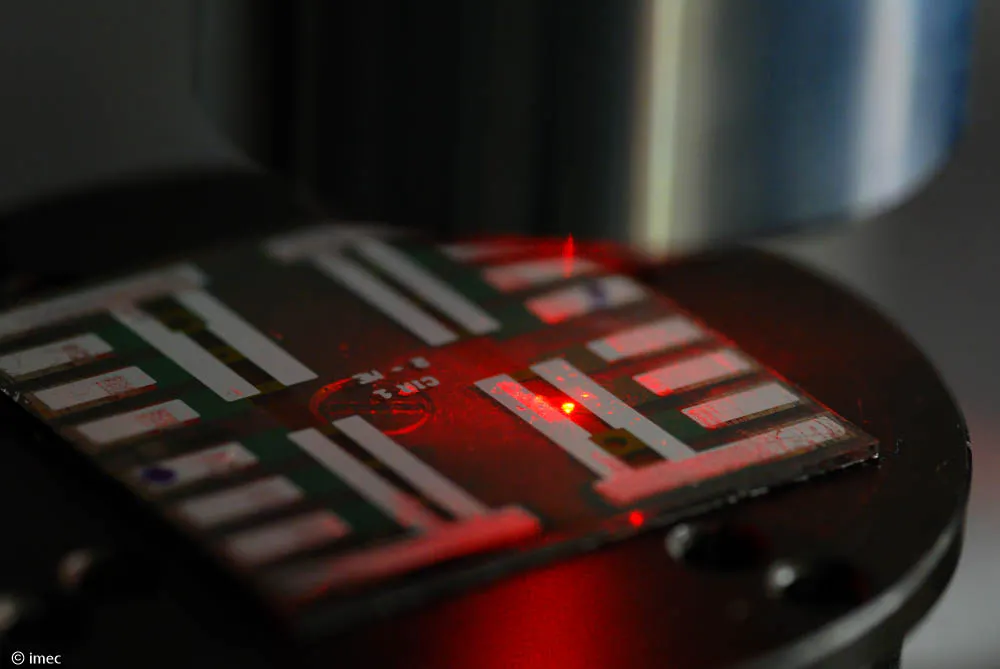
This result is a pivotal milestone towards a perovskite injection laser, promising applications in image projection, environmental sensing, medical diagnostics, and beyond.
The maximum brightness of OLEDs remains limited; just think of trying to read your smartphone screen on a very sunny day.
With their excellent optoelectrical properties, low-cost processability and efficient charge transport, perovskites have emerged in the last ten years as interesting candidates for light emission applications, such as LEDs.
However, while perovskites can withstand very high current densities, laser operation with the emission of high-intensity coherent light has not been reached yet.
Perovskite LED
“Imec showed a PeLED architecture with low optical losses and pumped these PeLEDs to current densities that support the stimulated emission of light”, says Professor Paul Heremans, who is an imec senior fellow and principal investigator of the project, “this novel architecture of transport layers, transparent electrodes and perovskite as the semiconductor active material, can operate at electrical current densities tens of thousands of times higher (3 kA cm-2) than conventional OLEDs can.”
“With this architecture, imec enhanced amplified spontaneous emission, with an electrical assist of the conventional optical pumping. By doing so, imec demonstrated that electrical injection contributes 13 percent to the total amount of stimulated emission and thus approaches the threshold to achieve a thin-film injection laser”, says Imec’s Robert Gehlhaar.
See all Imec stories on Electronics Weekly






